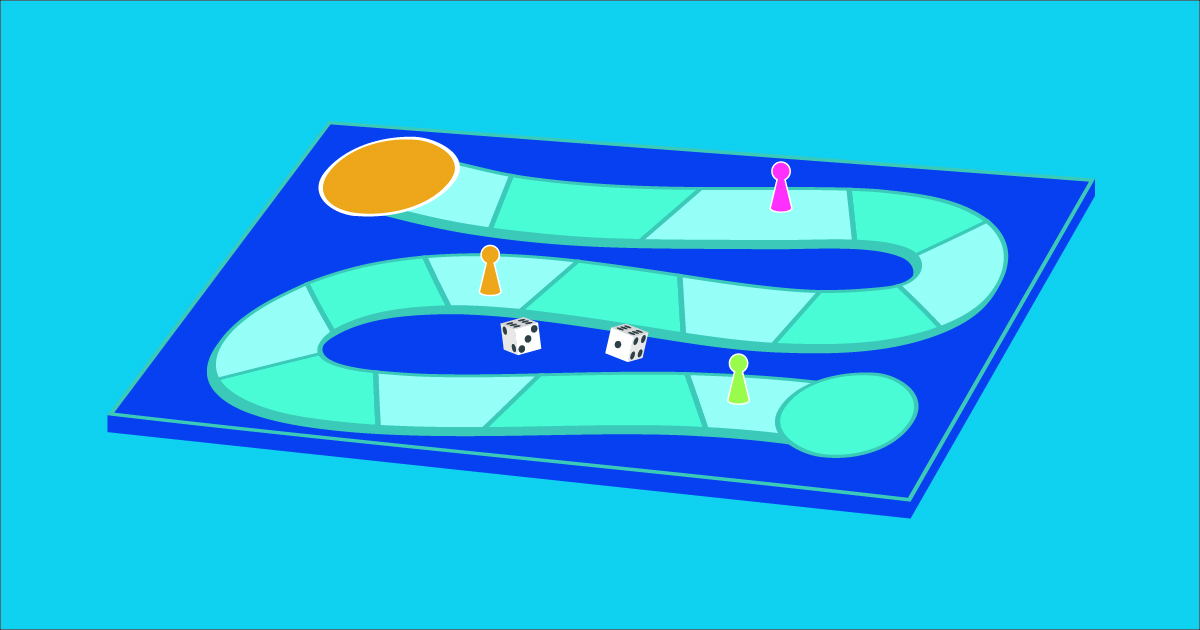Student Engagement | Education Technology
Engaging Students with Gamification in the Classroom
After serving as a Texas FFA state officer in 2018, Josh Witherspoon joined the iCEV team as a part-time employee for 3 years before taking on the role of content development specialist in 2022. Witherspoon holds a bachelor's degree in agricultural communications from Texas Tech University, in which his experience and proficiency in writing, marketing and CTE allow him to effectively communicate the successes of CTE educators and students and the value iCEV has to offer.
The classic game Candyland when you think about it has virtually nothing to do with candy. The purpose of the game is to simply roll dice and move along a path to reach the end of the board. “Candy” as the game's theme simply contributes to making it fun and engaging. What can be learned from games is that adding narrative, storyline, a theme, or fun graphics can make an activity more engaging or impactful.
In today’s CTE classrooms, ensuring students are engaged in their learning is of upmost importance as teachers are planning lessons and activities. The gamification of learning is an educational approach that seeks to motivate students by using video game design and game elements in learning environments. In this blog, we will discuss the benefits of incorporating gamification into the CTE classroom and tips for coming up with ideas for games or themes to incorporate.
A Game Changer
Regardless of the grade or subject matter you teach, using learning games can help educators create exciting, educational and entertaining learning experiences for their students. Games appeal to a person’s basic instinct to play and motivate learners to truly engage with content in lessons or activities. Gamifying lessons and activities also ensures students remain cognitively active in the learning process, leading to higher retention of the content and more enjoyable learning experiences.
Gamification is also beneficial in allowing learners to see the real-world applications and benefits of the subject matter they are learning. Students are able to get a first-hand look at how their choices within the game result in consequences or rewards. Gamification also allows students to work towards real-time, measurable goals, and receive feedback as goals are achieved.
The advantages of incorporating gamification into CTE classrooms are endless as it increases engagement, motivation, retention and makes learning more fun. Aside from the benefits gamification offers today’s CTE classrooms, oftentimes it can be difficult to come up with ideas for what kind of games to incorporate and how to effectively incorporate them into lessons. To help you more effectively incorporate games into your classroom, we've brought together a list of tips and ideas on how to get started.
Tips for Incorporating Gamification
Tip #1:
Find a theme or narrative in a game, movie, or tv show that is popular among the students you teach. Once you have found a theme or narrative that can be interweaved into a lesson, ensure that the theme makes the topic being discussed more interesting, and avoid allowing the theme to be take students' focus away from the primary lesson.
Tip #2:
Board games are also valuable gamification techniques as they add a level of competition and motivation to completing tasks and learning content. For example, if students are preparing for a test and need to review past content, a teacher could use the board game Sorry to review test questions. The teacher would simply assign numbers to each spot on the board that corresponds with a question that students must answer when they land on the spot. Board games can be a fun and low-cost way of gamifying what could be seen as unengaging to students and is a great motivating tool for overall student engagement.
Tip #3:
Integrating educational video games into your curriculum is another great way to gamify your classroom. The use of online games allows students to fail, overcome, and persevere, giving students a sense of agency in their personal learning process. Online games and activities such as flashcards, puzzles, word searches and matching games are readily accessible online through websites like Flippity, and can be personalized to fit your lesson needs.
In today’s CTE classrooms ensuring students are engaged in their learning is of upmost importance as teachers are planning lessons and activities. The opportunity for new ways to increase student engagement and knowledge retention through gamification is immense as more educators begin to understand how to effectively educate today’s students. To learn more about gamification and the value it can bring to CTE classrooms, check out our other blogs on EdTech tools such as Pear Deck, Flipgrid, and Mentimeter to take your student’s learning to the next level.


